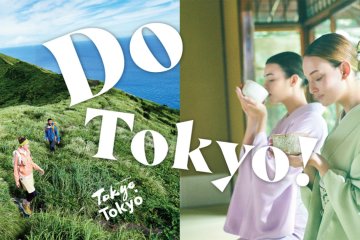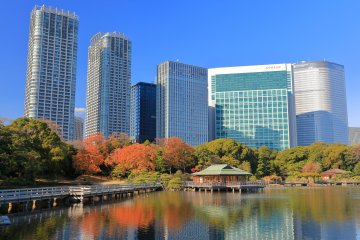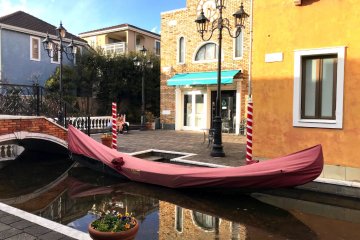1. Senso-ji

Location: Taito
Admission: Free
Established in 645 AD, Senso-ji is Tokyo’s oldest temple and a major pilgrimage site. Built to honour Kannon, the Buddhist goddess of mercy, it traces its origins to a statue pulled from the Sumida River by two fishermen. One of its most iconic features is the Thunder Gate, flanked by fierce statues of Fujin and Raijin. These twin gods of wind and thunder stand guard beneath a massive red lantern. Nearby stands a five-story pagoda, one of Japan’s tallest, which houses sacred relics of the Buddha.
2. Zojo-ji

Location: Minato
Admission: Free for the main temple grounds
- Mausoleum: ¥500
- Treasure Gallery: ¥700
- Combined ticket: ¥1,000
Founded in 1393, Zojo-ji was relocated to its current site in 1598 by Tokugawa Ieyasu, famed founder of the Tokugawa shogunate that ruled Japan for over 250 years. It is best known as the family temple of the powerful Tokugawa clan, with six shoguns buried in the Taitoku-in Mausoleum on the temple grounds. The on-site Treasure Gallery, which opened in 2015, showcases Buddhist scrolls by Kano Kazunobu and a model of the shoguns’ mausoleum.
3. Meiji Jingu

Location: Shibuya
Admission: Free for the main shrine grounds.
- Inner Garden: ¥500
- Museum: ¥1,000 (¥900 for high school students and younger)
Completed in 1920, Meiji Jingu honours Emperor Meiji and Empress Shoken, who were instrumental in Japan’s modernisation. The shrine is surrounded by a 70-hectare forest planted with trees from across the country, symbolising national unity. It’s famous for its torii gate, one of the tallest in Japan, and its beautiful Inner Garden, where irises bloom in early summer. During New Year’s, Meiji Jingu becomes one of Japan’s most visited shrine, drawing millions of worshippers.
4. Gotoku-ji

Location: Setagaya
Admission: Free
Gotoku-ji is widely known as the birthplace of the maneki-neko, or beckoning cat, believed to bring good fortune. Founded in the early Edo period as the Ii clan’s family temple, it earned its lucky reputation from a famous legend—a cat is said to have beckoned feudal lord Naotaka Ii into the temple just before a thunderstorm struck. Today, the grounds are filled with thousands of cat figurines left by visitors either in thanks for fulfilled wishes or in hope for good fortune to come.
5. Sengaku-ji

Location: Minato
Admission: Free for the temple grounds.
-
Memorial Museum: ¥500
Sengaku-ji, built in 1612, is best known as the burial site of the 47 Ronin—samurai famous for avenging the death of their lord, Asano Naganori, in 1703. This historical legend of loyalty and justice has been retold for centuries in books, plays, and films. The ronins’ graves draw visitors year-round, especially on December 14 during the annual memorial festival. A small museum on site displays artifacts, videos, and other exhibits that recount the ronins’ story.
6. Nezu Shrine

Location: Bunkyo
Admission: Free for the main shrine grounds
-
Azalea Garden (during Azalea festival in April-May): ¥500
Nezu Shrine is one of Tokyo’s oldest religious sites, with roots stretching back over 1,990 years. It was rebuilt in 1705 after Tokugawa Tsunayoshi, the powerful fifth shogun of the Tokugawa dynasty, ordered its relocation. Today, it stands as a beautifully preserved example of Edo-period architecture. The shrine is famous for its tunnel of red torii gates and its hillside azalea garden, which bursts into bloom each spring with over 3,000 bushes in pinks, purples, and whites.
7. Tomioka Hachiman Shrine

Location: Koto
Admission: Free for the shrine grounds
-
Museum: ¥500 (Children: ¥300)
Tomioka Hachiman isn’t just a shrine, it’s hallowed ground for sumo fans. Established in 1627, it played a central role in the rise of professional sumo during the Edo period, having hosted some of the earliest official tournaments. Today, the shrine still hosts annual sumo rituals, including the Sumo Shrine Festival in late July where wrestlers perform sacred purification rites. It is also home to the Yokozuna Stone, where the names of all sumo grand champions are engraved.













